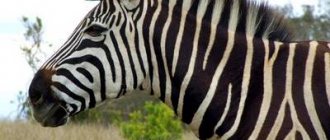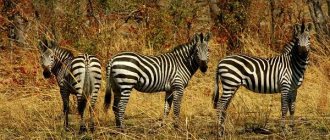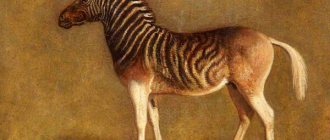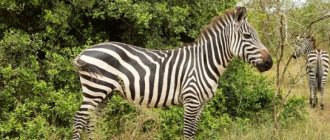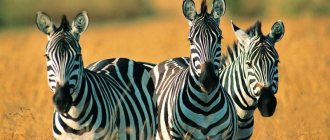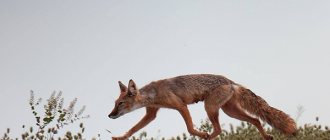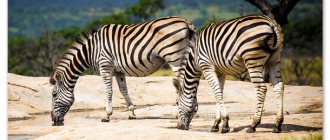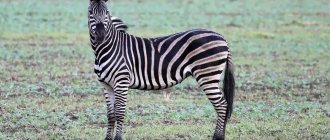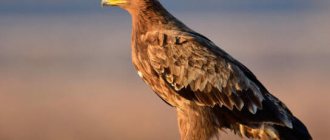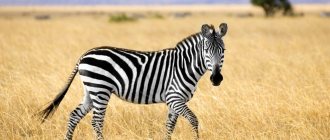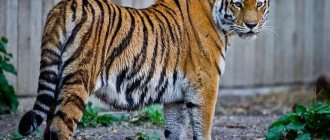WILD HORSES OF AFRICA
In their structure, steppe zebras are similar to horses, and the head, short, stiff occipital mane and long, tasseled tail resemble a donkey. The height at the withers reaches almost 1.4 m, weight - up to 300 kg.
Steppe zebras live in open areas with grass or in open forests. Typical of these African wild horses is a springy gait. The structure of their legs allows them to sleep standing up without straining their muscles. Like all equines, the zebra has large molars that are used for grinding plant foods. Zebras, like horses, are nervous animals. They are very vigilant and, when attacked, mostly flee. On the other hand, stallions are extremely warlike and aggressive, they can bite painfully and hit their opponents hard with their hooves.
Zebra behavior and lifestyle
Zebras are highly sociable animals that roam the savannah in herds for protection from predators. Grevy's zebra occupies herds more freely than other species, with the stallion (male) patrolling vast territories of up to 10 square kilometers, with mares (females) and their foals grazing freely and sometimes forming small groups that feed together. Both the Common Zebra and the Mountain Zebra inhabit their native areas in long-running herds that are divided into smaller family groups led by a dominant stallion and containing one to six mares with their young. Their strong social bonds can make them very affectionate towards each other, often grooming each other with their teeth. During mating season, males will fight fiercely for the right to breed with females and will do so by standing on their hind legs and kicking and biting each other.
THE MYSTERY OF THE ZEBRA STRIPES
There are many theories about the meaning and purpose of the contrasting black and white pattern. Stripes have long been considered camouflage, which optically breaks up the outline of an animal's body (somatolysis) and protects it from large predators such as lions. But zebras never try to hide in the bushes, where such camouflage would make sense. Also, the assumption that lions can be confused by their striped pattern during an attack has not yet been confirmed. Another theory is that the striped pattern affects the eyes of tsetse flies in such a way that these stinging insects do not perceive zebras as an attack target. This point of view is supported by the fact that tsetse flies are carriers of pathogens of various diseases, in particular nagana, and zebras suffer relatively little from this disease. However, the contradiction is that zebras often move side by side with antelopes, which these flies attack. At a short distance, flies navigate by smell, and they are practically indifferent to whether their victims have stripes or not.
Most likely, the stripes on the skin serve a social function within the herd, since this is the only way to identify each animal. In any case, it has been proven that the striped pattern helps zebras recognize each other when grooming, which has an important role.
Types of Zebra Stripes
- Grevy's zebra
- Hartmann's mountain zebra
- Chapman's zebra (steppe zebra subspecies)
- Grant's zebra (subspecies of steppe zebra)
Zebras: description
Experts believe that about 4 and a half million years ago, a line of development was formed that is the ancestor of modern animals such as horses, donkeys and zebras. As a rule, zebras are quite graceful and beautiful animals.
Appearance
Zebras are medium-sized mammals, with a body length of no more than 2 meters. An adult weighs on average about 320 kilograms. The length of the tail is about 50 centimeters. As a rule, males are larger than females, so their height at the withers is within one and a half meters. The zebra has a fairly dense and stocky body, while the limbs are relatively short, but the hooves are powerful and well developed. Males have special fangs that help them protect their herd from natural enemies.
Interesting to know! The zebra has a short but stiff mane. In the area of the back, the hairs are located in a “brush” that runs from the head to the tail.
The neck of these horses is quite strong and muscular, while in males it is thicker. Adults are not characterized by running as fast as adult horses, but can reach a very respectable speed of up to 75 km/h. The zebra runs away from natural enemies not in a straight line, but in zigzags, which makes it an almost inaccessible food source for many predators.
Despite the fact that the zebra has poorly developed vision, it has a well-developed sense of smell, so it senses a potential threat from a great distance, and the entire herd already knows about this threat. In order to communicate with its fellows, the zebra has a unique set of sounds, in the form of a dog barking, a horse neighing or a donkey scream.
The zebra has a very unique body color: in the neck and head area, black stripes are located vertically, and the rest of the body is decorated with the same stripes, which are located at an angle. The limbs have a pattern of the same stripes arranged horizontally. According to experts, the zebra's coloring is intended to protect the animal from tsetse flies and horseflies. There is also another version related to camouflage from various predatory animals.
Interesting moment! Each individual is born with its own unique, individual pattern of dark stripes. Cubs recognize their mother solely by their individual color.
Zebra - interesting facts
Character and lifestyle
Zebras are characterized by the fact that they are quite curious animals, and their curiosity sometimes turns into tragedy for them. Animals prefer to unite in large groups. Each male has his own “harem”, which includes several females with their offspring. The male bravely protects his family from any attacks. Each herd numbers up to fifty individuals, although this is not the limit and more numerous herds can be found.
Each family lives according to certain rules of hierarchy. When the herd is resting, several individuals guard their rest, acting as sentinels.
How long do zebras live?
Living in a natural environment, some individuals live up to 25 years. Being in captivity, this animal can live 2 times longer.
Types of zebras with photos
In nature there are only 3 species of animals that belong to the Zebra subgenus:
Burchell's zebra (Equus quagga)
Represents the most common type. It got its name in honor of the English botanist Burchell. The peculiarity of the pattern on the animal’s body is that it can change depending on living conditions. In this regard, 6 main subspecies are distinguished. The northern subspecies are characterized by a more contrasting pattern, while the southern subspecies have a more blurred pattern located on the lower part of the body, and beige stripes are visible on the white skin. Adults grow up to 2 – 2.4 meters, while the tail length reaches 0.6 meters. The height of the animal at the withers is about 1.4 meters, and the weight of adult individuals reaches 3 hundred kilograms.
Grevy's zebra (Equus grevyi)
Named after the French president and represents the largest species of similar representatives of the equine family. Grevy's zebras grow up to almost 3 meters in length and can weigh about 4 hundred kilograms. The tail length of such animals is half a meter. This variety is distinguished by the fact that the color of these animals is predominantly white or whitish-yellow, and a wide dark stripe runs down the middle of the back area.
Mountain zebra (Equus zebra)
It differs in that its color is predominantly black, and there are also thin white stripes that reach on the limbs to the hooves. Adults gain weight of about 300 kilograms, and their body length is 2.2 meters. The height at the withers of these animals reaches one and a half meters.
It is important to know! The Burchell's zebra subspecies Quagga is considered extinct. At one time, this subspecies was found throughout South Africa. The peculiarity of the subspecies is the presence of striped colors located on the bay horse color.
Hybrids obtained by crossing a zebra with a domestic horse, as well as with a donkey, have not become so widespread. The hybridization process involved taking male zebras as the basis, while other animals were represented by females. Zebroids are more similar to horses, and there are stripes on their body, although partially. Although hybrids are characterized by a rather aggressive behavior, they can still be trained. In this regard, they can be used as riding and pack animals.
Where does the zebra live?
Burchell's or Savannah zebra is found in the southeastern part of the African continent. Lowland subspecies prefer to live in savanna conditions, located in eastern Africa, as well as in the south of the continent, including Sudan and Ethiopia. Grevy's species is quite widely represented in the subequatorial zone of the eastern part of the African continent, including the territories of countries such as Kenya, Uganda, Ethiopia, Somalia, including Meru. Mountain zebras live in mountainous areas at altitudes of up to 2 thousand meters in South Africa and Namibia.
Interesting fact! Both adults and baby zebras love to take dust baths.
This method of bathing allows animals to get rid of all kinds of ectoparasites.
Birds help these animals in the fight against ectoparasites. Zebras get along well with a small bird called the bull woodpecker. This bird constantly “rides” on the zebra, while it uses its beak to remove harmful insects from its skin. Zebras feel great in the company of other animals that graze peacefully in the vast expanses of the savannah. They get along well in the same territory with buffaloes, antelopes, gazelles, giraffes, and ostriches.
What does a zebra eat?
Zebras are odd-toed ungulates whose diet consists of food items of plant origin. Adult animals prefer to eat green but short grass that grows close to the ground. It should be noted that the diet largely depends on the species, as well as living conditions. Desert zebras have to eat quite coarse vegetation, which many members of the equine family do not eat, since it is not digested in them. Therefore, desert zebras mainly feed on coarse plant foods that have a fairly rigid structure.
Desert zebras that live in arid areas also feed on leaves and bark of trees and shrubs, since in such conditions the grass cover practically does not grow. The diet of the mountain zebra consists of forbs, which cover the mountain slopes with a continuous carpet. The zebra's diet contains food items such as buds and young shoots of plants, corn shoots, root parts of plants and fruits.
The life of a zebra is not possible without sufficient amounts of moisture. For most of the daylight hours, these animals feed while on natural grazing.
Reproduction and offspring
The reproduction process in these animals begins in late spring - early summer. This period is characterized by the fact that females begin to spread their hind limbs and move their tails to the side, which is a sign that the females are ready to reproduce. The female carries her future offspring for 1 year, so the moment the cubs are born may coincide with the period of their conception. Scientists have found that about a week after giving birth, the female can become pregnant again, but the offspring appear only the next year.
As a rule, 1 cub is born, weighing about 3 tens of kilograms and up to 0.8 meters tall. After birth, the cub only needs half an hour or an hour to get on its feet and follow its mother. A few more weeks will pass and plant foods begin to appear in the cubs’ diet.
Interesting to know! Male zebras are ready to breed after reaching 3 years of life, and females 2 years. The ability to reproduce, regardless of the species, remains until the age of 18.
The mother feeds her baby with milk for 1 year. During this period, females and their offspring are in a separate herd.
The milk of a female zebra contains a sufficient amount of nutrients to ensure the proper development and active growth of the foal. It should be noted that it has a peculiar creamy-pinkish color. The special composition of milk, including nutritional components, vitamins and minerals, allows you to maintain the necessary balance in the digestive system, as well as strengthen the immune system.
Almost until the age of 3, young zebras are part of a certain group. This allows the young to be well protected from various predators. Males, having reached 1 year of life, are expelled from the herd, after which they have to form their own groups. During the first weeks of life, the cubs are under the constant care of their mother. In case of danger, a zebra tries to hide its foal in the depths of the group, while all adult relatives stand up to protect the offspring.
Zebra - Interesting facts about the species | Zebra horse view
Natural enemies
Living within their range, zebras are attacked by large predators such as lions, cheetahs, leopards and tigers. When animals appear at a watering hole, they can be attacked by crocodiles. Cubs can become prey for hyenas. Until the age of 1 year, foals are susceptible to both attacks by predators and infection with various diseases. By the age of one year, about 50 percent of the offspring that are born survive.
This animal is quite cautious and timid. Its unique color allows it to protect itself from many predators. In this, the animal is helped by vision, acute hearing, as well as a subtle sense of smell. When running away from a predator, a zebra tries to rush from side to side. Possessing a fairly high speed of movement, as well as maneuverability, this animal is little vulnerable to natural enemies.
Important point! If it is necessary to protect its offspring, the zebra rears up like a horse. At the same time, she bites and kicks painfully, effectively fighting off various predators.
GOOD FEED RECYCLERS
Steppe zebras primarily feed on grass; only occasionally they consume foliage and eat shrubs. Zebras lack the enzyme cellulase, which is necessary to break down cellulose. Therefore, like all ruminants, their bodies contain microorganisms that perform this function. They, like other equines, are located in the cecum (in ruminants - in the stomach). Since zebras digest food well, if necessary they can make do with rougher food.
What does a zebra eat?
The zebra is a herbivore, meaning that it eats plant matter only to obtain the nutrition it needs to survive. The majority of a zebra's diet (about 90%, in fact) consists of a wide variety of different grasses, with the rest being other plant matter, including leaves and buds. They use their sharp front teeth to bite the tough ends of the grass before grinding them with their flat molars along the cheeks. Because grass has little nutritional value, zebras must spend 60% to 80% of their day grazing. Common zebras are often seen drinking at waterholes, which they do every day, but due to the fact that Grevy's zebra and Mountain zebra live in drier, arid areas, they often do not drink for several days at a time. During the dry season, zebras can travel great distances in search of fresh grass and still-dry bodies of water, and Grévy's zebra is also known to burrow into the soil of dry river beds to access water underground.
CLOSE COHESION
As social animals, steppe zebras share their habitat with many grass- and leaf-eating animals. Other species benefit from the vigilance, good vision, hearing and sense of smell of zebras.
In most cases, zebras live in family groups of several adult females and young ones (5-20 animals), led by a stallion. During movements, the oldest mare often leads the herd, followed by the rest of the animals, and the stallion forms the rear guard. The availability of food determines whether zebras will undertake long-distance movements or remain faithful to their habitat. As long as there is enough food, they stay in one area. In the Serengeti, where food is limited during periods of drought, small groups of steppe zebras gather in large herds in search of food. Animals always strive for close physical contact in a group; they groom and bite each other. Mares in particular spend a lot of time nearby; They also have a subordination: those of higher rank are the first to approach the water source.
Zebra habitat and distribution
Zebras are animals that live in the open grasslands and plains of Eastern and Southern Africa where they graze on grass almost all the time. The common zebra is the most numerous and has the widest natural range in all of East Africa, where they are found roaming the grassy plains. The mountain zebra can be found grazing in the mountain grasslands of South West Africa, while Grévy's zebra is restricted to arid grasslands and semi-desert steppes throughout Ethiopia, Somalia and northern Kenya. Zebras have evolved to run incredibly fast, so they are able to outrun dangerous predators and therefore rely heavily on open plains for their survival. Although the common zebra has been the least affected, all three species are at risk of population decline due to loss of their natural habitat caused by increasing levels of human activity.
HAREMS AND GROUPS OF BACKGROUND
Steppe zebras are not territorial animals; The patrol areas of one family group, each of which, depending on the availability of food, can be 30-600 km2, overlap with the areas of neighbors. Young stallions at the age of four begin to compete over mares and try to acquire their own harem. At the same time, they engage in fierce fights, kicking and biting their opponents. If a stallion captures a harem, his position remains unchallenged, and competitors rarely challenge him. Stallions over four years of age who were unable to capture a harem converge into groups of bachelors. At the onset of puberty at the age of 2-4 years, young mares leave the herd where they were born and join a neighboring herd or several young stallions. For mares, life in a harem has the advantage that, thanks to the vigilance of the leader, they can spend more time searching for food, they have a protector and are protected from the harassment of other stallions. If a mare is not happy with her stallion, she can leave the group and join another.
After a twelve-month pregnancy, the female gives birth to a foal in December-January, which can immediately rise and follow its mother. He soon begins to graze, although he additionally suckles from his mother for about a year. Although foals are guarded and protected, the mortality rate among them is very high (about 50%).
Zebra appearance and anatomy
Zebras are heavy animals that are ideally suited for speed, with their long, thin legs and narrow hooves helping them reach speeds of 40 km/h when running. Just like horses, they only have one toe on each foot, which they walk on the tip of and is protected by their hard hooves. Their black and white stripes are unique to each individual and help them identify each other when in a herd. Zebras have long necks and heads, which means they can easily reach grass on the ground, and a mane that extends from their forehead and along their back to their tail. Their stripe patterns vary between the Grevy and mountain zebra species, which have narrower stripes and a white underside, while the Common zebra has broad stripes that cover its entire body. Grévy's zebra is not only the largest of all zebras, but is also easily recognizable by its large, rounded ears.
INTERESTING FACTS
Mountain zebras are lovers of rocky terrain
Mountain zebras (Equuszebra) are adapted to life in mountainous grassy areas. They have better muscle development than their relatives in the valley, and narrower hooves. Mountain zebras today can only be found in southwest Africa. There are two subspecies: the Hartmann's zebra (Equuszebra hartmanni), which lives in the dry regions of Namibia, and the Cape mountain zebra (Equus zebra zebra), which is widespread in the mountains of the Eastern and Western Cape, although the population has never been large.
Classification and evolution of zebras
The zebra is a large species of horse native to the grassy plains of sub-Saharan Africa. They are the largest and most distinctive wild horses, with bodies adorned with white and black stripes, the exact arrangement of which is unique to each individual. There are three different species of zebra found in Africa: the Common Zebra (also known as the Plains Zebra and Burchell's Zebra), the Grévy's Zebra (also known as the Imperial Zebra) and the Mountain Zebra. Zebras are incredibly sociable animals that can travel great distances in search of fresh grass and water, but are under serious threat throughout much of their natural range due to increasing levels of human activity. Today, both the Grévy's zebra and the Mountain zebra are considered endangered species, and although the Common zebra is more common and abundant, some areas are experiencing steep population declines.
Zebra's relationship with people
Because zebras roam freely over vast distances, the growing human presence around the world has caused zebras to suffer habitat loss across much of their natural range. However, one of the most intriguing things about Zebras to people is that because they are so closely related to other horses, including Horses and Donkeys, Zebras were actually able to crossbreed with them to produce a hybrid foal known as Zonkey (Zebras and donkeys) or as Zors (Zebras and horses). Although it is not believed that the two species would naturally mate in the wild due to geographic differences, there are currently many individuals of both Zonki and Zors around the world. Zebras are believed to have natural defenses against certain parasites, which has led people to crossbreed horses and donkeys with Zebras to produce an animal that has the character and size of a Horse or Donkey, but has the strength and endurance of a Zebra. However, like other crossbreeds, Zonks and Zorses are sterile and therefore incapable of self-reproduction.
What predators hunt zebra
The zebra is a large and powerful animal that, despite its herbivory, can easily outrun many of its predators. Zebras are hunted by lions , leopards, hyenas and African wild dogs , as well as many other large predators such as crocodiles , when they cross rivers or drink. Although their first instinct is to run away, zebras will sometimes attack an animal that threatens them by kicking and biting. However, when they detect danger, zebras warn each other of the threat and, fleeing from their predator in a dense herd, often either confuse or simply intimidate the attacker. However, the biggest threat to Africa's remaining zebra populations is increasing human encroachment on their natural habitat, with the loss of their open plains to grazing and land clearing for agriculture.
Conservation status of the zebra and its life today
Today, two of the three zebra species are listed as critically endangered by the IUCN and are therefore at risk of becoming extinct from their natural habitats in the future. Grévy's zebra and mountain zebra are found in increasingly isolated regions, and their numbers continue to decline throughout their natural ranges. The common zebra is an animal that is listed as critically endangered in the wild, and although they are still widespread and their numbers appear relatively stable, they, like other species, are threatened by habitat loss across much of their native range.
Interesting facts and features of the zebra
Zebra stripes remain a mystery to science even today, as they were once thought to camouflage them in the natural light and shadows of the environment to confuse predators, since once running like a herd, it is extremely difficult to stay focused on one animal. The formation of the stripes on the hind end of the zebra varies greatly between the three species, with common zebras having horizontal stripes on the hind legs where those of Grévy's zebras curve upward. Zebra stallions are known to curl their upper lips upward, which is believed to enhance their sense of smell. This so-called “horse laugh” is believed to be vital for the male to determine when the female is ready to mate.
